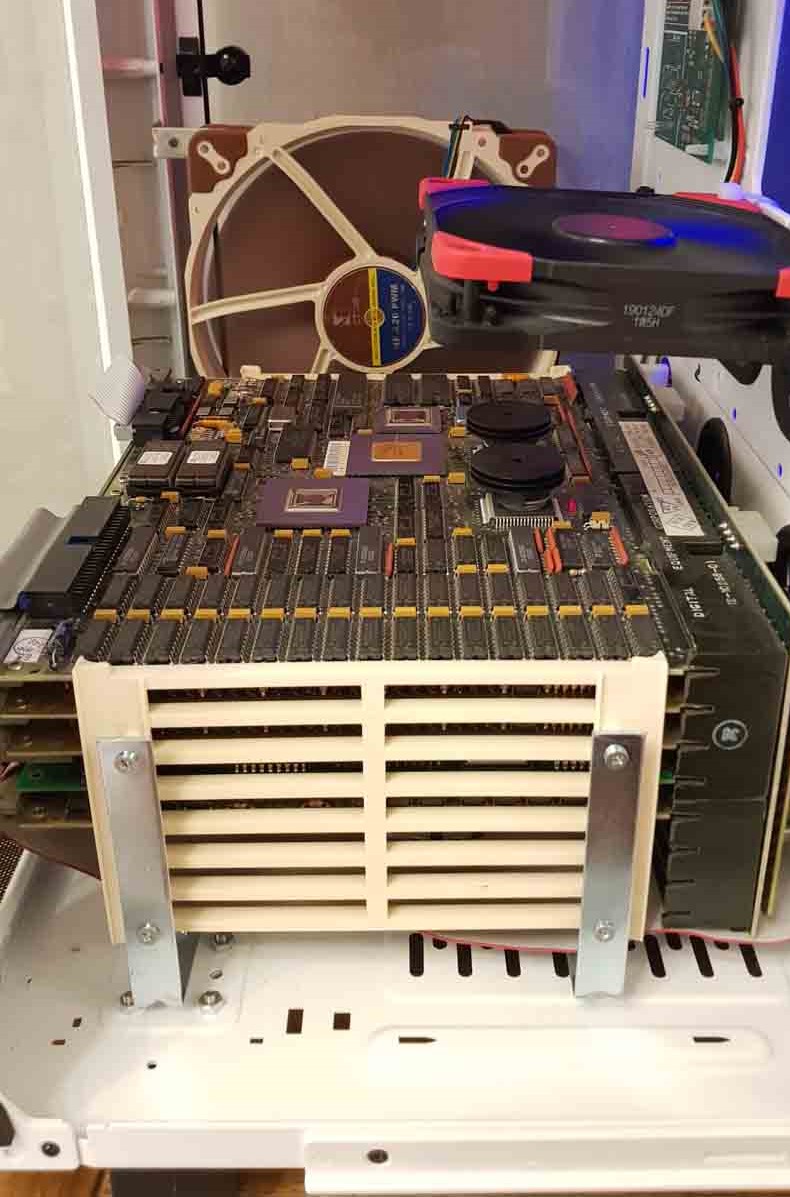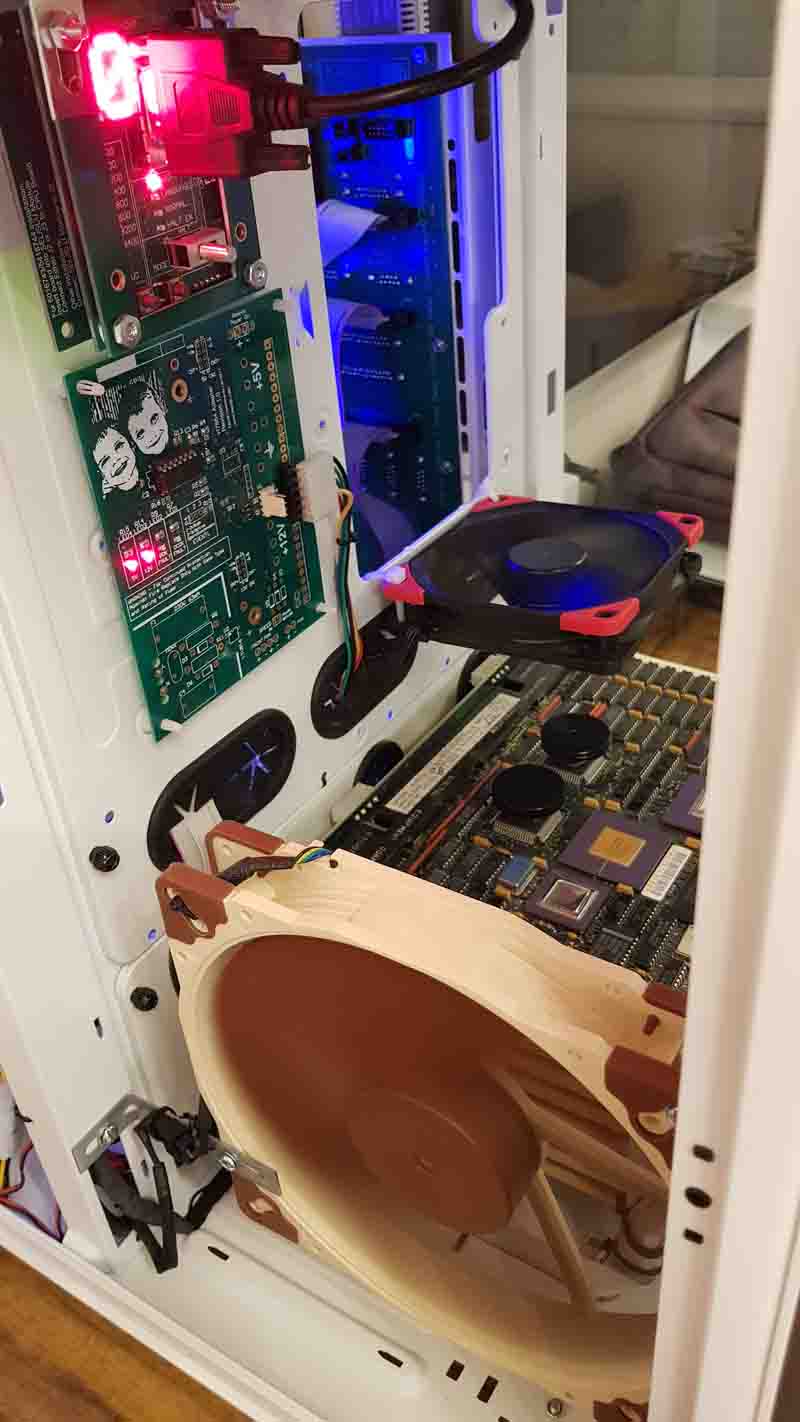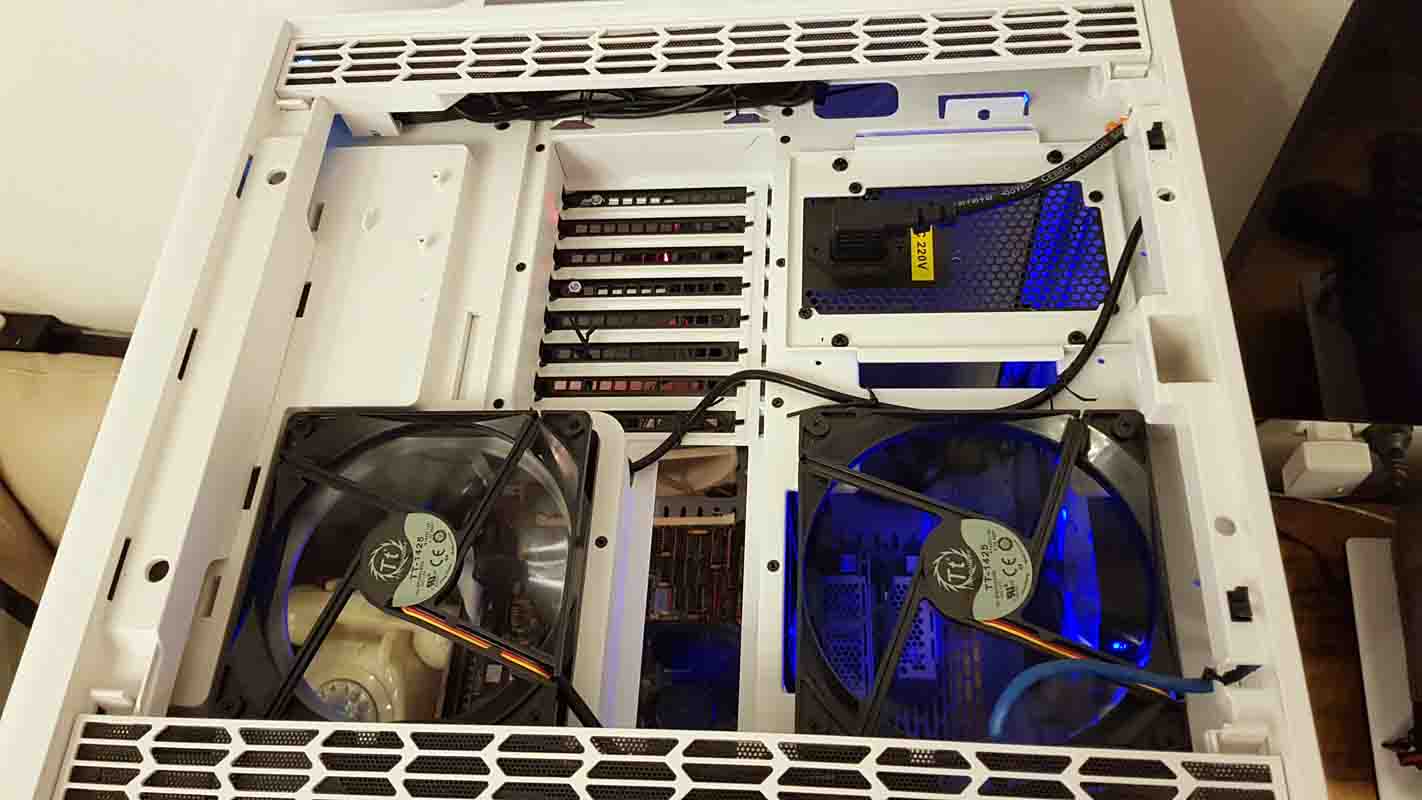

Some Random MicroVAX II Facts, Anecdotes and Applications
The MicroVAX II was a popular versatile machine, that was used extensively in numerous and varied applications. Applications and users included office work like word processing and accounting, scientific, military, engineering, the US Navy, embedded process control (Allen Bradley MicroVAX Processor EE), Mass spectrometers, observatories, medical equipment, NASA, JPL, and universities all around the world.
The MicroVAX II can run the following operating systems:
MicroVMS, designed to run on MicroVAX machine, had PDP-11 compatibility mode removed , and had no support for clustering. PDP-11 support could be added using the VAX11-RSX optional software product.
Clones of the MicroVAX II were developed: in East Germany (Robotron K-1820), in Hungary (MicroSTAR 32 or TPA-11/510) and in the Soviet Union (SМ 1702).
Standard enclosures for the MicroVAX II were:
The KA630 could run in a two-CPU fault-tolerant configuration, called MIRA.
A MicroVAX II could (according to the Supermicrosystems Handbook) accommodate over 30 concurrent users. From personal experience, it was barely usable with 16 users.
MicroVAX II could be connected to Apple and IBM computers (1986):
1986
How many were produced?
According to this Los Angeles Times article, 10,000 MicroVAX II machines were sold in the first 8 months after its introduction.
The MicroVAX II was valuable –
“In upper Arlington, Comp-u-card reported two break ins […] on March 6, Comp-u-card lost $140,000 worth of MicroVAX II hardware, including a TK50 tape drive, three RD53 disk drives, five computer memory cards and two DHV-11 terminal controls […] On July 13, a MicroVAX II computer and a MicroVAX 630QE -A2 system were stripped of hardware valued at $150,000 […]” - Computerworld 29 Sep 1986
1987
January: Rugged Digital Systems Inc. was offering ruggedized MicroVAX II computers, for harsh environments, offering TEMPEST-level security and MIL-spec shock, vibration and temperature specifications. The basic configuration cost $55,000 ($125,000 in 2020).
Both the American and Australian entries to the 1987 America’s Cup yacht race used MicroVAX II computers to help them win. The American Stars & Stripes 87 won over the Australian Kookaburra III. The computers were apparently taken on board the boats, and were used to “collect and analyze information… on things like wind speed, wind direction, and sea state”. A MicroVAX II was also used in the design of the Stars and Stripes hull.
Read all about the onboard computer programs here.
“Every few seconds on the high-flying Australian entry Kookaburra III--now a favorite to win the right to defend the Cup--an American-made Digital MicroVax II computer, humming along in the bilge on 400 pounds of batteries, sends out a signal to electronic sensors scattered around the boat.
Rudder settings, wind strength and direction, boat speed, compass heading, angle of heel, tension on the rigging, sail settings, location of the boat on the course and other details are gathered into a data base.
In the stern, navigator Derek Clark sits at a four-screen video-display terminal, monitoring and calling up analysis as needed and wiping the salt spray from his screen.” – “Computers Are Playing an Important Role in the America’s Cup”, Washington Post, Dec. 14th, 1986
A video from 1987 shows a look at the computer panel on board the "Stars & Stripes" (skip to 48:20):
MicroVAX II computers were apparently also assembled in India, in a joint venture with Hinditron in Bangalore- (?) any confirmation would be much appreciated.

1988
September: MicroVAX II computer boards valued at US$45,000 were stolen from Ohio State University College of Engineering. They were later retrieved by the FBI.
The MicroVAX II was export controlled for national security and foreign policy reasons:
“On September 8, 1988, Estela Beatriz Garcia, an Argentine national, was arrested by OEE Special Agents at the Miami International Airport immediately after she attempted to illegally export two DEC MicroVAX II computers without a license. She had concealed the computers in suitcases on a flight to Buenos Aires. […] Their attempted export to Argentina was of special concern because that country has not signed the Nuclear Non-proliferation Treaty.”
Export Administration Annual Report FY 1988, US Department of Commerce, p.87.
October: DEC introduced the Micro VAX 3300 (“MicroVAX III”) and MicroVAX 3400 machines, which were over double the price/performance of the MicroVAX II.
According to a NY Times article from October 21, Digital has sold more than 100,000 MicroVAX II machines as of October 1988.
1989
A MicroVAX II was installed as a mainframe computer at McMurdo station in Antarctica. It was apparently removed from service in 1999. There was also one installed at the south pole station, running the AMANDA neutrino observatory.
February 28th: First internet connection from Mexico
“The domain with which the first connection was made was dns.mty.itesm.mx, from a MicroVAX-II computer, which became the first .mx domain name server.”
Other sources claim that the MicroVAX got Internet connectivity on October 12th, 1988, set up as mnetv1.mty.itesm.mx.
1990
September 26th: The first internet connection in Poland was established through a MicroVAX II:
“The first analogue Internet connection was launched on September 26, 1990 and had a speed of 9600 bits per second. The Nuclear Physics Institute in Krakow on 19 November 1990 received the first IP address in Poland (192.86.14.0) assigned to it by United States Department of Defense. On November 20, 1990 CERN was sent the first e-mail to Poland and received it by this institute using the microVax II computer.”
January:
“… the Commerce Department gave free-trade advocates something to cheer by approving the export of Digital Equipment`s MicroVAX II to the Eastern bloc.” – Chicago Tribune, July 1 1990.
A MicroVAX II was doing signal correlation tasks (“NRAL Multibeam Correlator System”) at the Australia Telescope Compact Array (ATCA), a radio telescope comprised of six 22m radio antennas spanned across a 6km baseline in Culgoora, NSW, Australia.
In the days before DNS, every computer on the ARPAnet kept a copy of a text file called "HOSTS.TXT", which was a table describing all known hosts (unique computers) and their IP address. In this HOSTS.TXT file dated 12-MAR-1990 there are 386 gateways, 11 of which are MicroVAX II (2.8%), and 9332 hosts, of which 280 are MicroVAX II (3%).
American composer Paul Lansky used a MicroVAX II computer to generate the score "Smalltalk", a fully-computer generated musical piece ("Smalltalk", New Albion Records, Listen here)
1991
The MicroVAX II (“TEMPEST MVII”), was still available for purchase in December 1991.
1993
In this HOSTS.TXT file dated 30-MAR-1993, there are 58 gateways, four of which are MicroVAX II (6.8%), and 6177 hosts, of which 159 are MicroVAX II (2.5%).
MORE RECENT
Running non-stop for nine years:
“The scheduling system, running VMS on a MicroVAX 2, for the nurses staff at the Texas Tech Health Sciences Center in El Paso ran in a wiring closet for over nine years before a planned power outage in 2004 took it down. The MicroVAX rebooted, however the TOY or time of year battery failed, so the date was reset to January 1, 1980. Had it not been for the battery failing, and a nurse noticing the wrong date, it probably would have run a couple years more without anyone thinking about it.
A friend was called in to perform a conversational boot, because no one knew the administrative password to correct the time and date.” May 2016, John Maria, former Security Consultant at British Telecommunications, QUORA - this story needs more references…
A company in Japan was still maintaining MicroVAX II computers for customers in 2019.

1-MAY-2020
Updated 25-MAR-2023